THE LONG GAME
Rewilding Africa the tough way — lessons from Majete in Malawi
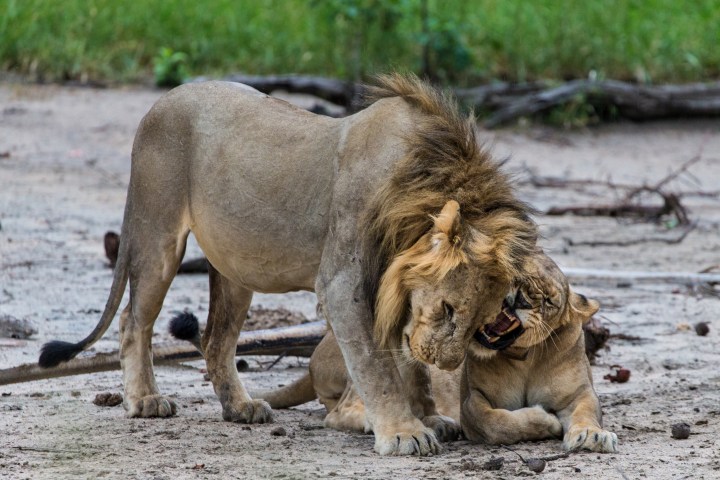
To conserve Earth’s biodiversity, the Global Deal for Nature calculated it would be necessary to protect 30% of the land and seas. Is that possible in Africa? A savvy conservation NGO has drawn up an African game plan that began with a single reserve.
The message from Majete Wildlife Reserve in southern Malawi is that ecosystems in Africa can be rewilded, but only with intense human intervention.
Twenty years ago, the reserve was degraded land. Its animals had been poached to a few jittery kudu, waterbuck and warthogs, its ancient woodlands rendered to charcoal.
Today it’s been fully rewilded, with elephant, black rhino, lion, leopard, buffalo, wild dogs and many species of antelope. It is home to more than 300 species of birds and their dawn chorus is almost deafening.
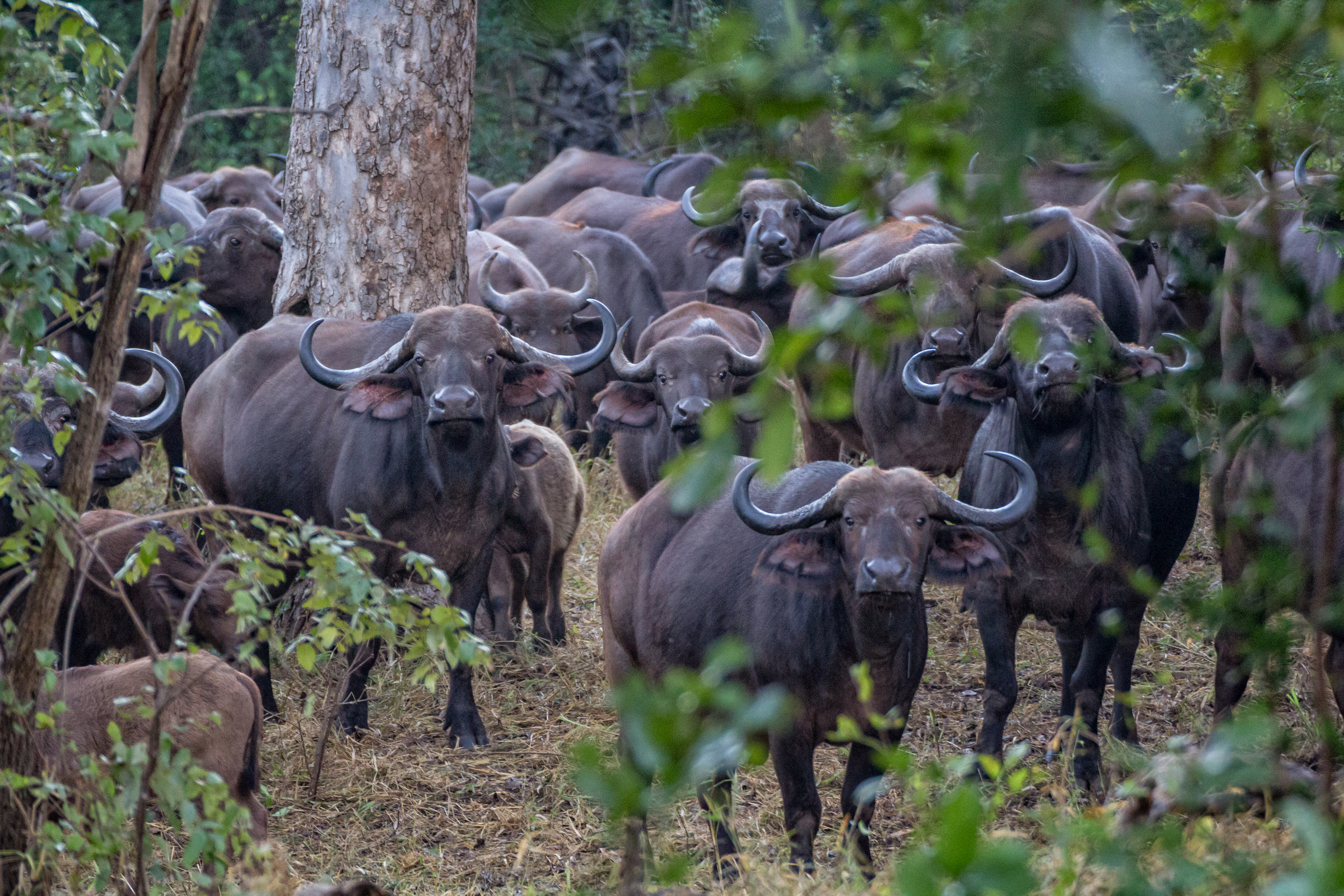
Since their reintroduction, Majete’s buffalo herds have flourished. (Photo: John Dickens)
Giant trees line the streams and the Shire River, which flows along its boundary. A waterhole just beyond the lodge veranda presents extraordinary sightings of animals no longer wary of humans.
But the process necessary to arrive here required a rethink of the notion of rewilding, which traditionally focuses on “replacing human interventions with natural processes… to create resilient, self-regulating and self-sustaining ecosystems”.
On a continent with the world’s fastest-growing population, stepping back to allow nature to restore itself is simply not an option. That’s what Majete taught African Parks (AP), which manages the reserve. To rewild in Africa you need intense management on both sides of the fence.
Looking after what is outside the fence
In the past, the model for park management had always been to look after what’s inside the fence. The AP approach is to also look after who’s outside it. It’s become a model for what rewilding requires to conserve wildlife on the continent.
“I know a lot of people are scathing about fences,” says Majete Park Manager John Adendorff, but if you have human-animal conflict, you have massive problems. Your reserve is dead in the water.
“We had to draw a line in the sand and say, this is park, that is community land, and we put up a fence. Then we worked on either side of it to make sure the benefits flowed in both directions.”
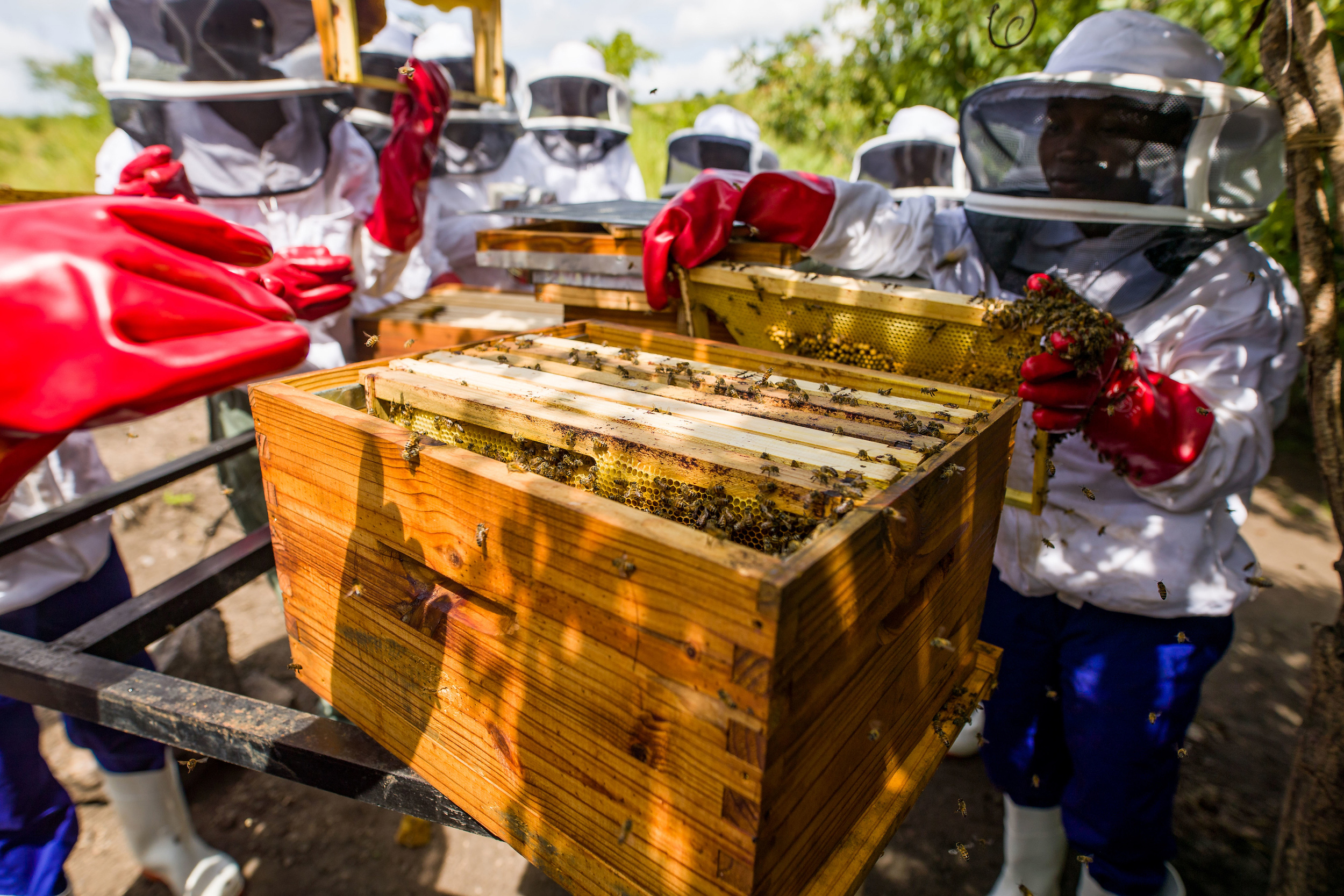
Bee Harvesting at Mejete has been a lifeline for many people in villages surrounding the park (Photo: Heunis Naude)
Community Extension Manager Dixie Makwale took me down a bumpy track outside the park fence to show what that meant. We stopped at a centre built by AP that contained a clinic, creche, community grain store, maize mill, community bank and honey processing workshop. There’s electricity and free WiFi access.
“There was nothing here,” a woman in a brightly coloured kanga told me, indicating the buildings. “Now I’m a beekeeper. Honey paid for my house with a good roof and kept my children in school. My husband is also a beekeeper, but I have more hives than him. And we have a clinic.”
Dixie explained: “There are six of these centres – we call them epicentres – around the park. They’re in the six traditional authorities surrounding Majete. It’s incredibly important to respect these authorities. They’ve been there for thousands of years.
“They all come together as the Majete Wildlife Reserve Association to discuss the way forward and how to improve things. There’s a sense of ownership, they’re our conservation ambassadors. It’s about building real and emotional ownership.
“Also, along the Shire River there are fish farms and a central nursery provided up to 90,000 trees a year for the community to plant.”
Adendorff is understanding about why the park was degraded before AP took over. “Malawi is the third poorest country in Africa,” he said. “We can’t blame people for cutting down trees to sell as charcoal, it’s one of their main sources of income. But we can help them replant. We have to create sustainable enterprises.
“We also have to get kids to understand the value of wildlife. It’s no longer part of their cultural landscape. So we bring neighbouring youngsters into the park, house them in tents and tell stories around the fire at night. And we provide educational scholarships.”
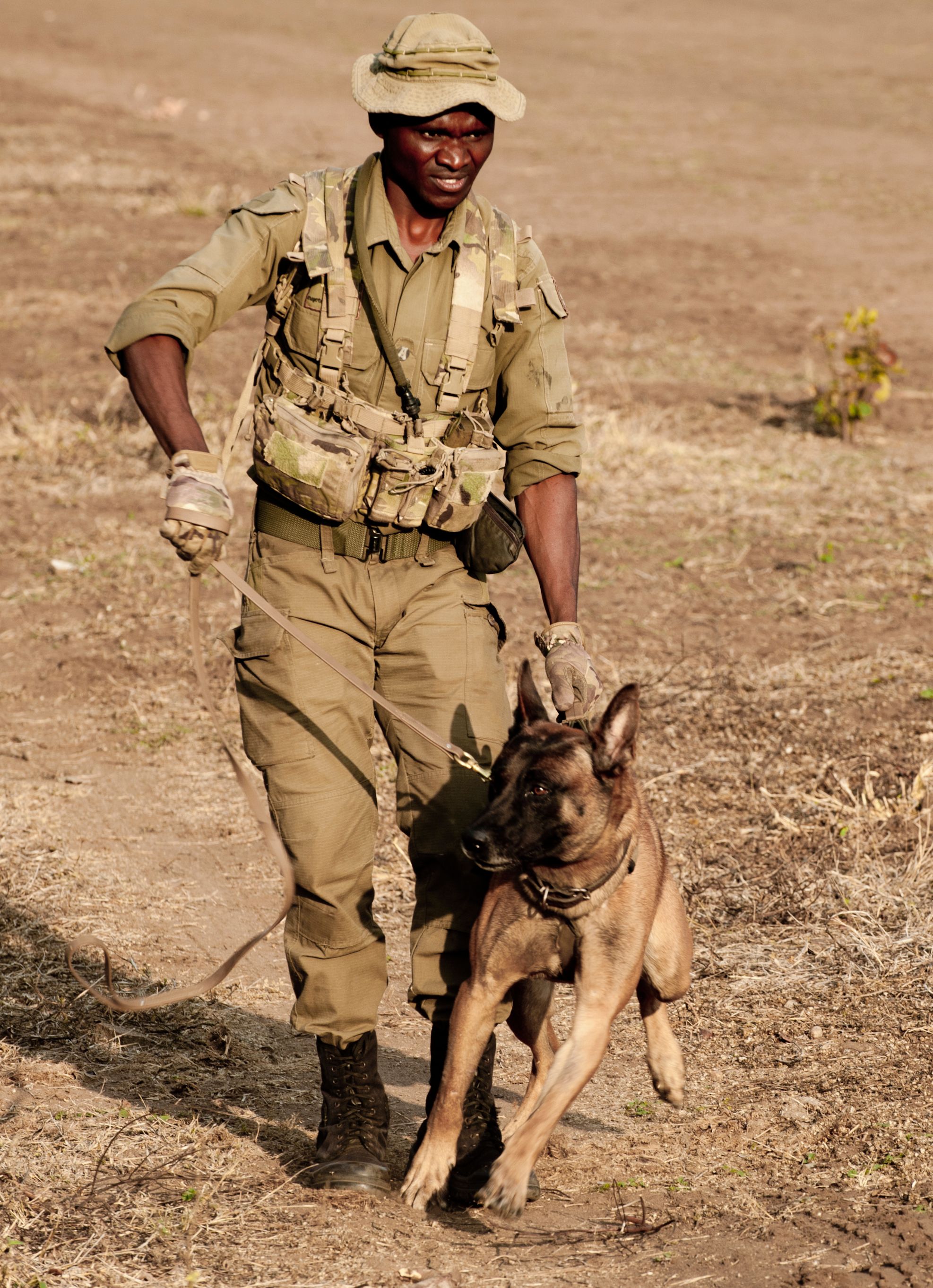
Gile the tracker malinois and handler at Majete. (Photo: Don Pinnock)
Dogs and more
Gaining community support for the park is half the battle, managing it is the other half. In that, AP has plenty of experience, administering 22 parks in 12 countries across Africa. Majete was its first, and its training ground.
The reserve has tracker dogs and 44 highly trained and armed rangers who monitor rhinos every day, both on foot and electronically.
In a demonstration of the dogs’ ability, a suitably padded volunteer was tracked by Gile and Milo, a Belgian malinois and a Dutch shepherd. Gile hit the “poacher” so hard when it found him that he was rolled and held down.
Dog trainer Bright Maondo laughed when I asked if he’d had to take down poachers like that. “We never have to,” he said. “We do that demonstration in areas surrounding the reserve and almost nobody has jumped the fence.”
I wouldn’t either, after seeing what a trained dog can do.
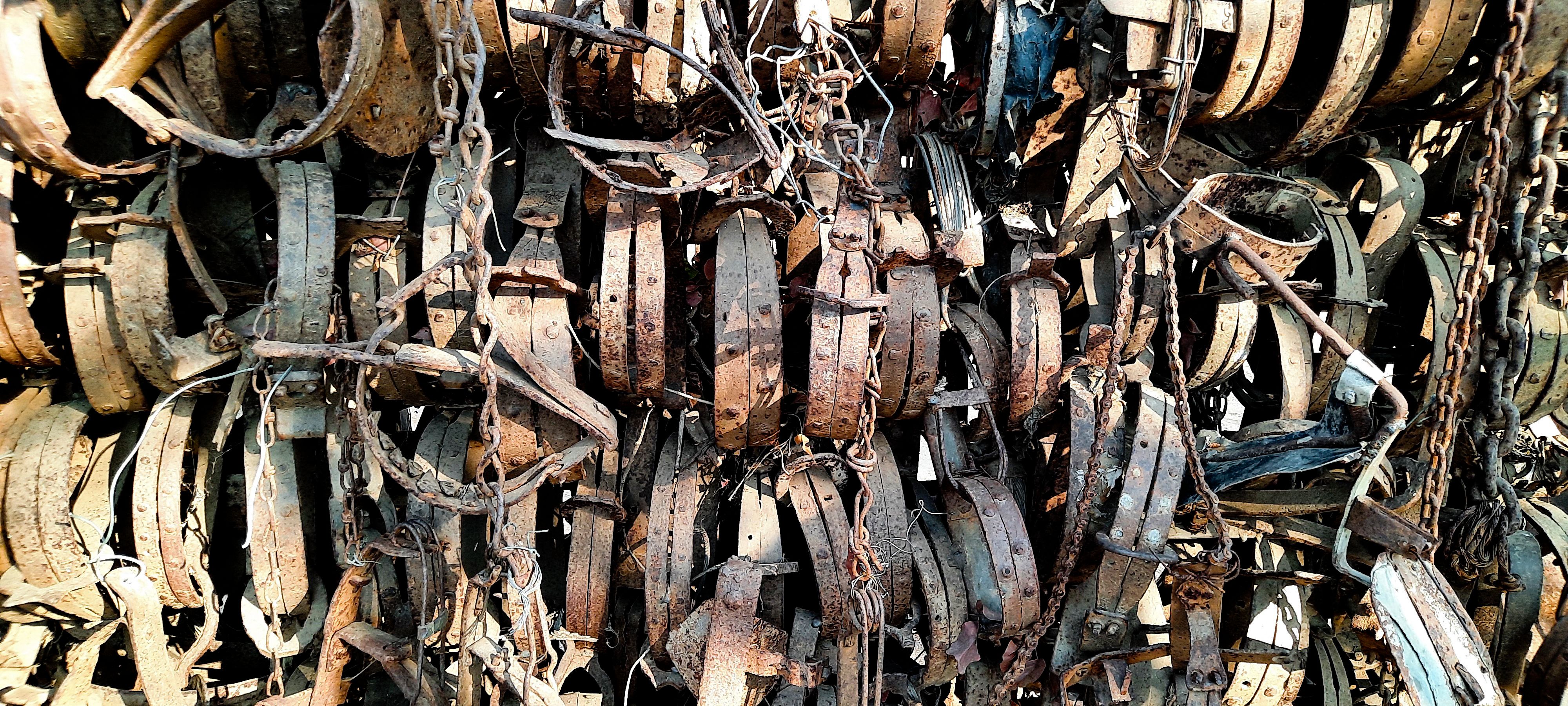
Traps confiscated in Majete. (Photo: Don Pinnock)
Database tracking
Each day, beginning before sunrise, rangers are out tracking the park’s black rhinos. They report their location, photograph them and check their condition. All this goes into a database which, combined with satellite collars on a range of animals, makes it possible for Majete’s wildlife monitoring team to survey the reserve in real time.
Ongoing animal activity is projected on a screen, giving a detailed birds-eye view of who and where animals are and what they’re up to. Majete may be rewilded, but it’s very carefully watched.
“Any closed system with a growing population needs to be managed,” explained Adendorff. “Almost all mammals here were brought in. Protected, populations grow. We have to manage that. Law enforcement is essential, as is never becoming complacent.
“When I worked in conservation in South Africa, we thought we were the best and we protected everything. Now rhino destruction there is huge and they’re not able to get on top of it. That taught us here at Majete to be pre-emptive rather than reactive. The surrounding communities are part of that. If a syndicate tries to infiltrate them, we’ll know immediately. We haven’t had a rhino poached in 20 years.”
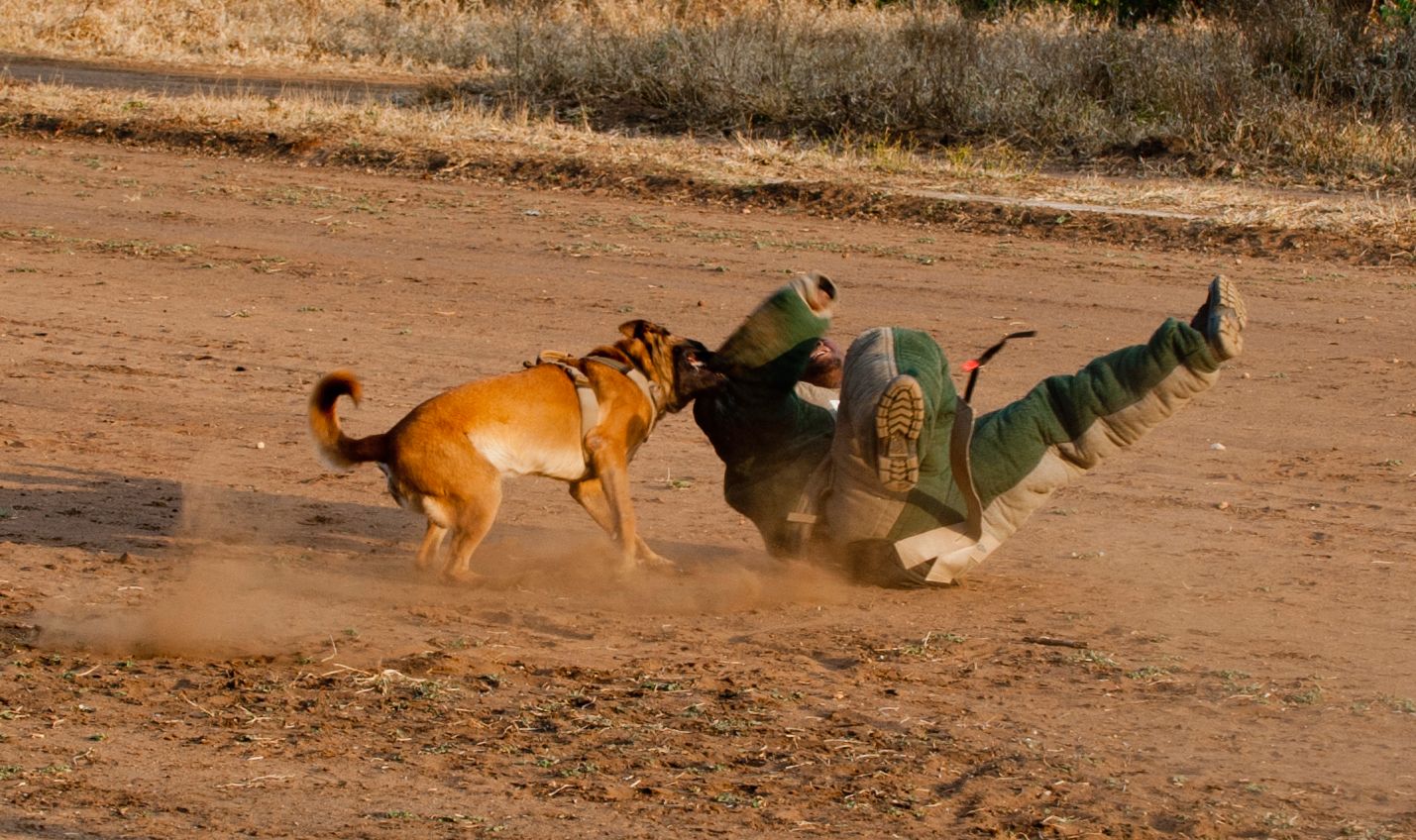
Gile the tracker malinois takes down a ‘poacher’ at Majete. (Photo: Don Pinnock)
Dreaming big
While Majete was the starting point for AP, in 20 years the NGO has grown, employing 1,100 highly trained rangers in Angola, Benin, Central African Republic, Chad, the Democratic Republic of Congo, Malawi, Mozambique, the Republic of the Congo, Rwanda, South Sudan, Zambia and Zimbabwe. AP is now widely acknowledged as the gold standard for park management.
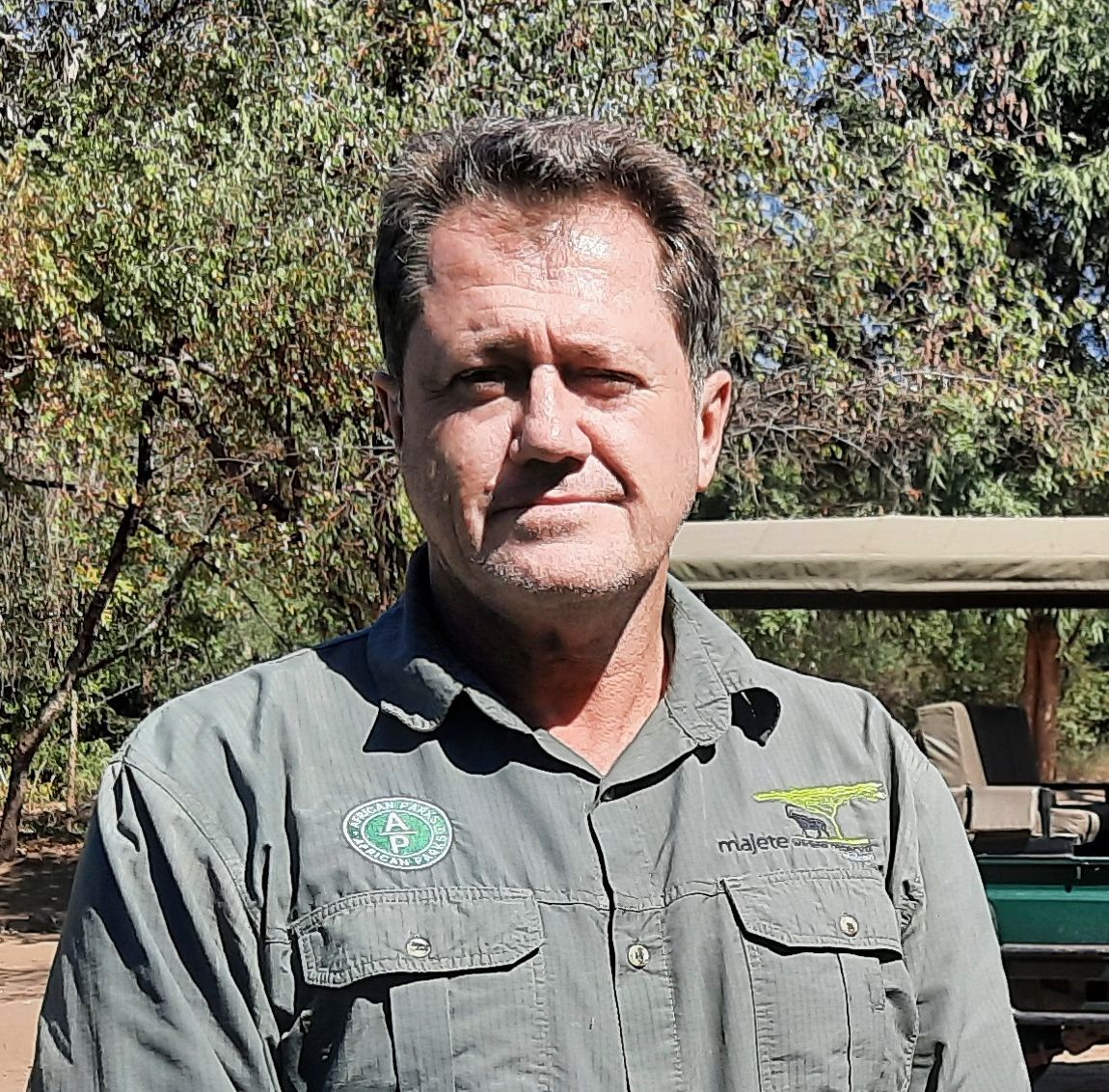
Park manager John Adendorff. (Photo: Don Pinnock)
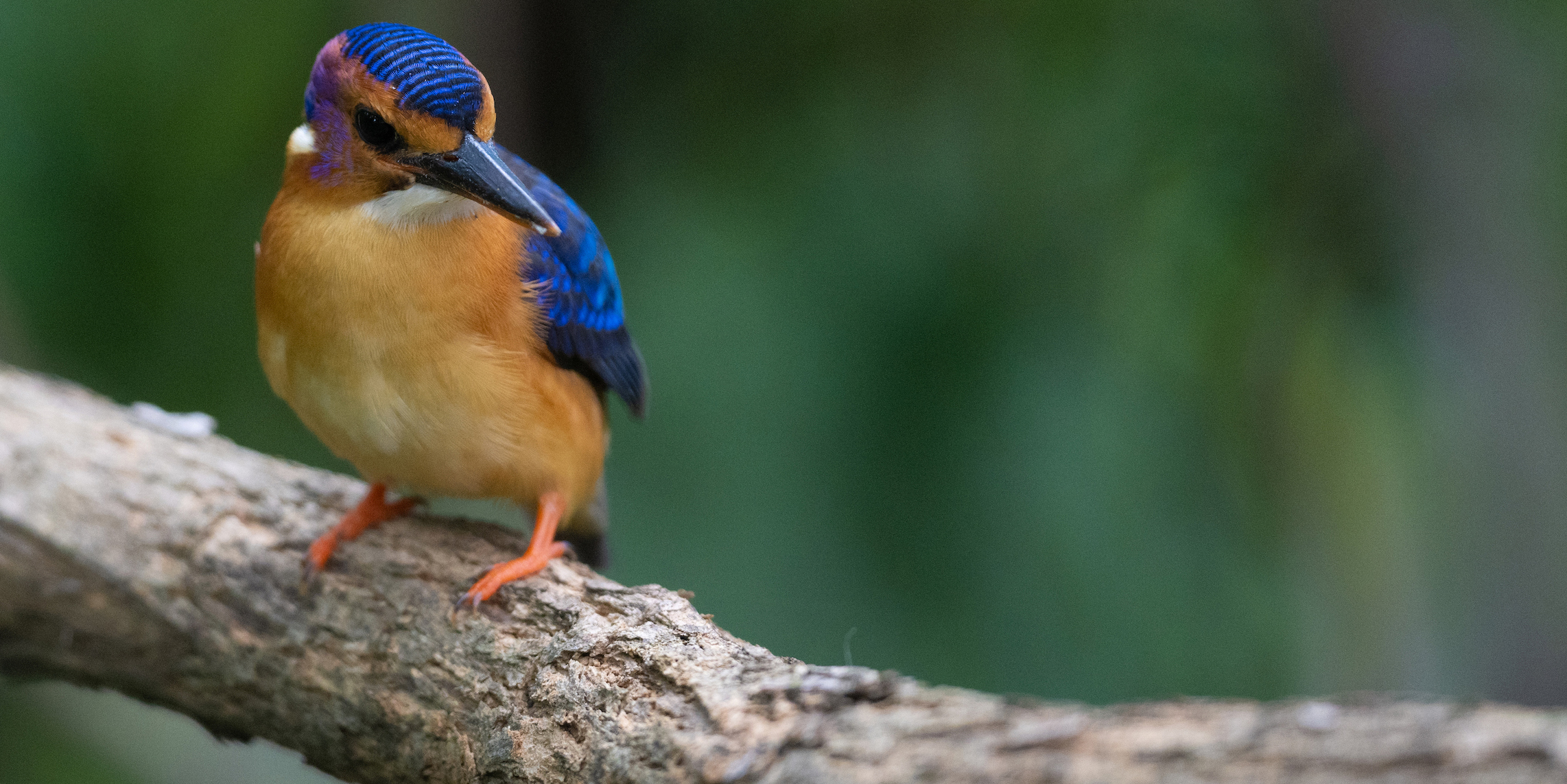
A kingfisher patrolling the Shire River at Majete. (Photo: Gael Vande weghe)
The NGO was formed in 2000 by Peter Fearnhead (the current CEO) Michael Eustace, Paul Fentener van Vlissingen, Anthony Hall-Martin and Mavuso Msimang (former CEO of SANParks) in response to the dramatic decline of protected areas across Africa from poor management and lack of funding. Prince Harry is the president.
In 2020, AP did an analysis of protected areas on the continent using its on-ground knowledge of the continent and the World Database of Protected Areas. What it found rang alarm bells.
While more than 8,000 protected areas were identified, most were too small to provide long-term resilience. Most of the larger areas were found to be suffering from decades of poor management and lack of resources. Many were “paper parks”– parks in name only, but with habitat and biodiversity lost.
Read more in Daily Maverick: With nature and biodiversity under threat everywhere, bold conservation funding ideas are needed
Focussing on what could be saved, AP identified 161 “anchor areas” (see map) with the greatest chance of being rehabilitated, and which contained globally significant biodiversity. Of these, it found only 69 managed in a way to ensure survival into the future.
The remaining 92 are experiencing uncontrolled poaching, habitat encroachment and degradation with little or no resources for their protection. Without resources and management, they are unlikely to survive.
In 2019, the Global Deal for Nature highlighted the need for at least 30% of terrestrial and marine areas to be protected if the planet’s biodiversity is to be secured, and the catastrophic consequences of a changing climate prevented.
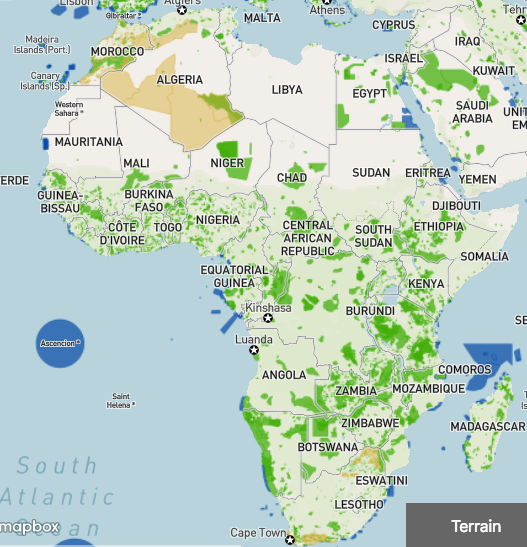
Africa protected areas. (Source: Mapbox)
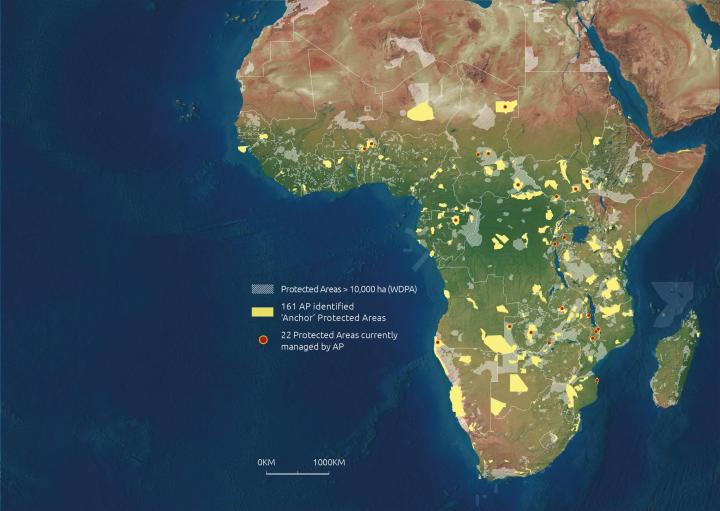
Casting Our Vision – updated.
Ambitious roadmap for Africa
Using that as a goal for Africa, AP created an ambitious “roadmap” to secure the anchor areas and directly manage 30 protected areas by 2030. It has also created a mentorship programme to support other management programmes and NGOs to replicate AP successes in a further 10 areas. It’s a dream, but a realisable one, says Adendorff.
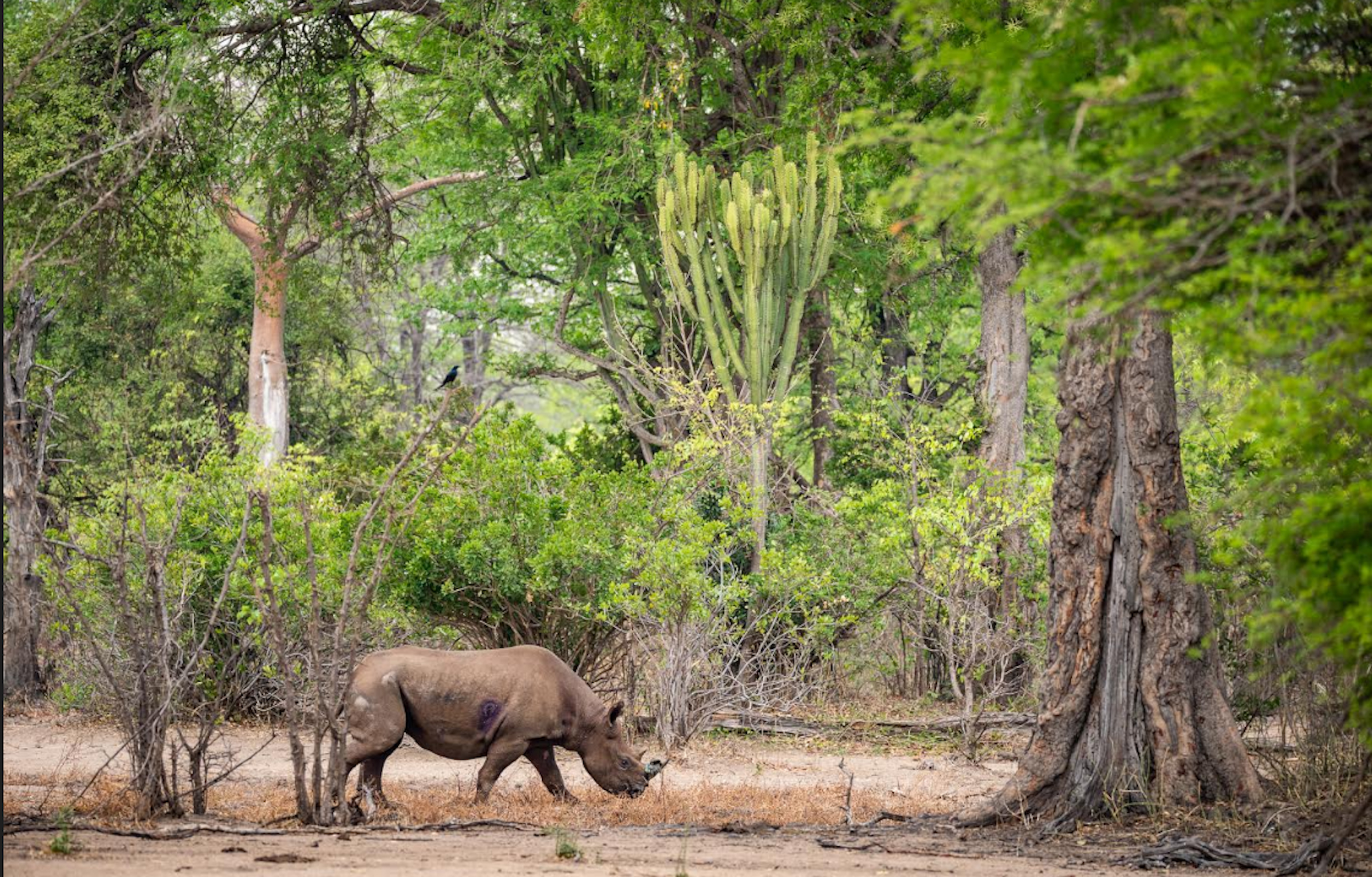
Guards protect Majete’s black rhino by tracking them every day. (Photo: Kyle de Nobrega)
“We have to buy time to change mindsets, change the landscape and empower locals. We at AP are an intermediary on the road to Africa caring for its own biodiversity and developing the skills to do that. Majete is spectacularly successful, but remember it’s taken 20 years by committed and passionate people. We’re in and part of a community who see benefit from bordering a wildlife area.
“Wildlife and the ecology of Africa is resilient, it will come back,” he said, as we watched a baboon outside his office inspecting the contents of his bakkie for a possible snack. “But we need to put certain key initiatives in place to make it work.
“We can’t rewild the traditional Western way of just stepping back. If we don’t manage intensively, if we don’t have community buy-in, it’s bound to fail. And we cannot fail Africa’s precious wild creatures and places.” DM



















 Become an Insider
Become an Insider
Comments - Please login in order to comment.